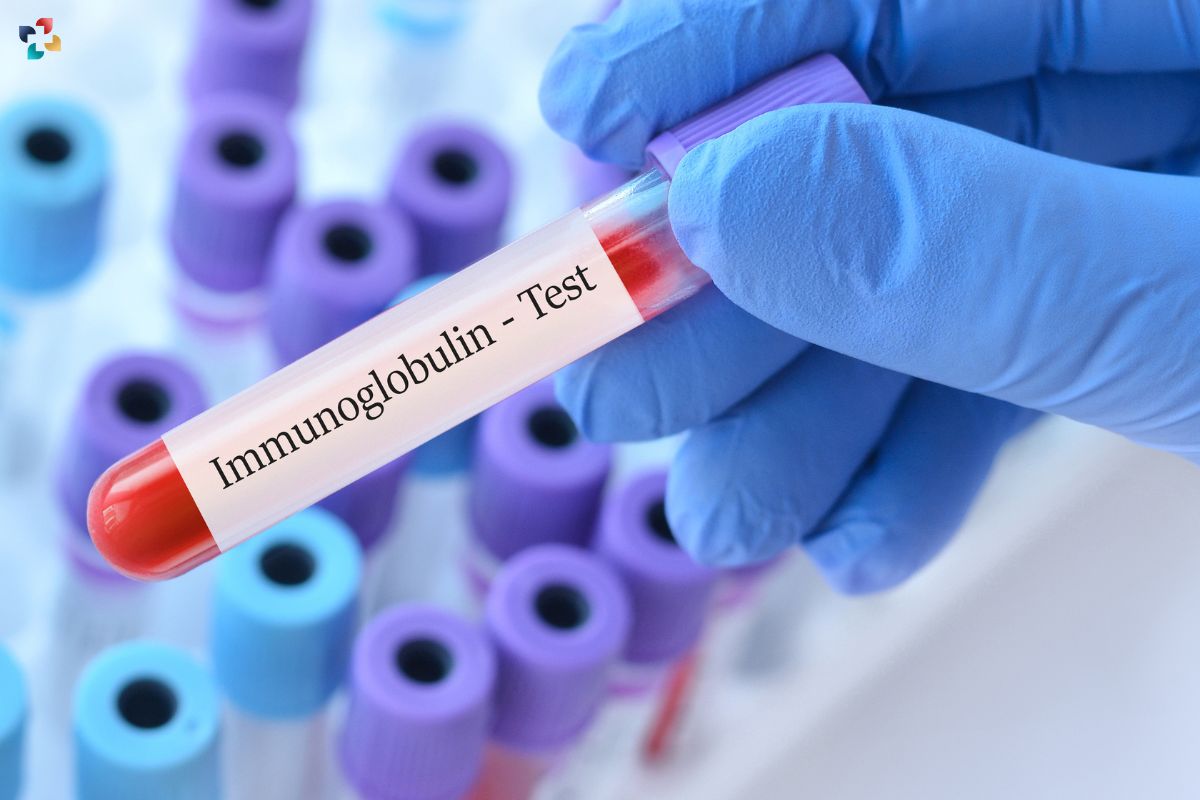The immunoglobulin test is a vital diagnostic technique that’s used to evaluate the effectiveness of the immune system in the body. This test offers a thorough understanding of an individual’s immune status by revealing important information about immunoglobulins, or antibodies. This investigation explores the complexity of the immunoglobulin test, including its significance, how to interpret results, and what happens when levels deviate from normal.
Understanding the Immunoglobulin Test: A Gateway to Immune Health
What is an Immunoglobulin Test?
An immunoglobulin test stands as a pivotal diagnostic procedure, delving into the intricate realms of the immune system by measuring the levels of immunoglobulins in the bloodstream. Immunoglobulins, often referred to as antibodies, constitute a formidable defense force orchestrated by the immune system to combat infections, viruses, and a myriad of foreign invaders that threaten the body’s well-being. This test provides a comprehensive and quantitative assessment of various types of immunoglobulins, each playing a distinct role in the immune response.
The Significance of Immunoglobulins:

1. IgA
This immunoglobulin, predominant in mucosal surfaces like the respiratory and gastrointestinal tracts, acts as the body’s first line of defense against pathogens attempting to infiltrate through these portals. Elevated or reduced levels of IgA can signal potential issues in the mucosal immune response.
2. IgG
As the most abundant immunoglobulin in the bloodstream, IgG takes center stage in providing long-term immunity against infections. It plays a crucial role in the immune memory, offering protection against previously encountered pathogens. Monitoring IgG levels aids in assessing the body’s ability to mount an effective immune response.
3. IgM
Rapid and robust, IgM is the first responder when a new threat emerges. Elevated levels of IgM may indicate an ongoing or recent infection. This immunoglobulin is particularly instrumental in the early stages of an immune response, signaling the initiation of the body’s defense mechanisms.
4. IgD
While its specific functions are not fully elucidated, IgD is primarily found on the surface of B cells, playing a role in the activation of the immune response. Monitoring IgD levels contributes to understanding the dynamics of immune cell interactions.
5. IgE
Often associated with allergic responses, IgE plays a crucial role in hypersensitivity reactions. Elevated levels of IgE can indicate an overactive immune response, potentially linked to allergies or parasitic infections.
Quantitative Insights:
The immunoglobulin test offers more than a qualitative overview; it provides quantitative insights into the abundance or scarcity of each immunoglobulin type. Deviations from the normal range can serve as valuable indicators, guiding healthcare professionals in identifying potential immune system irregularities, allergic conditions, or underlying infections. A nuanced analysis of immunoglobulin levels aids in tailoring medical interventions, ensuring a targeted approach to bolstering immune health.
In essence, the immunoglobulin test serves as a gateway to understanding the intricacies of the immune system, unraveling the body’s defense mechanisms at the molecular level. Beyond a diagnostic tool, it empowers healthcare providers to make informed decisions, fostering a proactive approach to immune health management.
Types of Immunoglobulins and Their Roles:

1. IgA (Immunoglobulin A)
Predominantly found in mucosal areas like the respiratory and gastrointestinal tracts, IgA plays a vital role in defending against infections at mucous membrane surfaces.
2. IgG (Immunoglobulin G)
The most abundant immunoglobulin in the blood, IgG provides long-term immunity and plays a key role in fighting bacterial and viral infections.
3. IgM (Immunoglobulin M)
The first antibody produced during an infection, IgM is effective in detecting early stages of diseases and triggering a rapid immune response.
4. IgD (Immunoglobulin D)
Found on the surface of B cells, IgD assists in the activation of B cells during the immune response.
5. IgE (Immunoglobulin E)
Primarily associated with allergic reactions and parasitic infections, IgE triggers the release of histamine, leading to allergic symptoms.
Decoding Results: The Impact of High Immunoglobulin Levels
What Happens if Immunoglobulin is High? Elevated levels of immunoglobulins can signify various underlying health conditions. High IgA levels may indicate autoimmune disorders, chronic infections, or liver diseases. Elevated IgG levels may suggest chronic infections, multiple myeloma, or autoimmune disorders. Increased IgM levels might be associated with acute infections or certain immune disorders. It is crucial to interpret elevated immunoglobulin levels in the context of specific symptoms and other diagnostic findings for an accurate diagnosis.
Unraveling Immunoglobulin Diseases: Navigating the Immune System Disorders
What is Immunoglobulin Disease? Immunoglobulin diseases encompass a spectrum of disorders characterized by abnormalities in the production, function, or regulation of immunoglobulins. These disorders can lead to an overactive or underactive immune system, impacting the body’s ability to defend against infections or causing autoimmune responses.
Common Immunoglobulin Diseases:
1. Common Variable Immunodeficiency (CVID)
Characterized by low levels of IgG, IgA, and/or IgM, CVID increases susceptibility to infections.
2. Hyper-IgM Syndrome
This genetic disorder results in elevated IgM levels and a reduced ability to produce other immunoglobulin classes, leading to recurrent infections.
3. IgA Deficiency
Individuals with IgA deficiency have lower levels of IgA, making them more susceptible to respiratory and gastrointestinal infections.
4. Waldenström Macroglobulinemia
This rare cancer involves the overproduction of IgM, leading to thickening of the blood and potential complications.
Determining Normalcy: Understanding Standard Immunoglobulin Levels
How Much Immunoglobulin is Normal? The normal range for immunoglobulin levels can vary based on age, sex, and individual health factors. However, generally accepted reference ranges include:
IgA: 80 to 350 milligrams per deciliter (mg/dL)
IgG: 700 to 1,600 mg/dL
IgM: 40 to 230 mg/dL
It is important to note that specific laboratories may have slightly different reference ranges, and healthcare providers interpret results in conjunction with clinical symptoms and medical history.
Clinical Applications and Considerations:
A. Diagnostic Utility:

1. Infection Monitoring
Immunoglobulin tests aid in assessing the body’s ability to fight infections, with elevated levels indicating an active immune response.
2. Autoimmune Disorders
Abnormal immunoglobulin levels can be indicative of autoimmune conditions, helping clinicians in the diagnosis and management of diseases like rheumatoid arthritis and lupus.
3. Allergy Assessment
Elevated IgE levels may signal allergic conditions, assisting in the identification and management of allergic reactions.
B. Considerations for Interpretation:
1. Clinical Context
Immunoglobulin levels should be interpreted in the context of the patient’s clinical presentation, medical history, and other laboratory findings.
2. Medication Influence
Certain medications, such as immunosuppressants, can impact immunoglobulin levels, necessitating consideration in result interpretation.
3. Age and Sex Factors
Immunoglobulin levels may vary with age and sex, requiring age-specific and gender-specific reference ranges for accurate assessments.
Conclusion: Guarding Health through Immunoglobulin Insights
The immunoglobulin test is a sentinel in the field of diagnostic medicine, offering important insights into the body’s defense mechanisms. The immunoglobulin test is essential for directing healthcare decisions, whether they are connected to monitoring responses to infections or deciphering the mysteries of immune-related illnesses. The intricate interpretations of immunoglobulin levels, which underline the vital confluence of immunological health and diagnostics in the pursuit of general well-being, continue to contribute to personalized treatment as our understanding of the immune system progresses.











